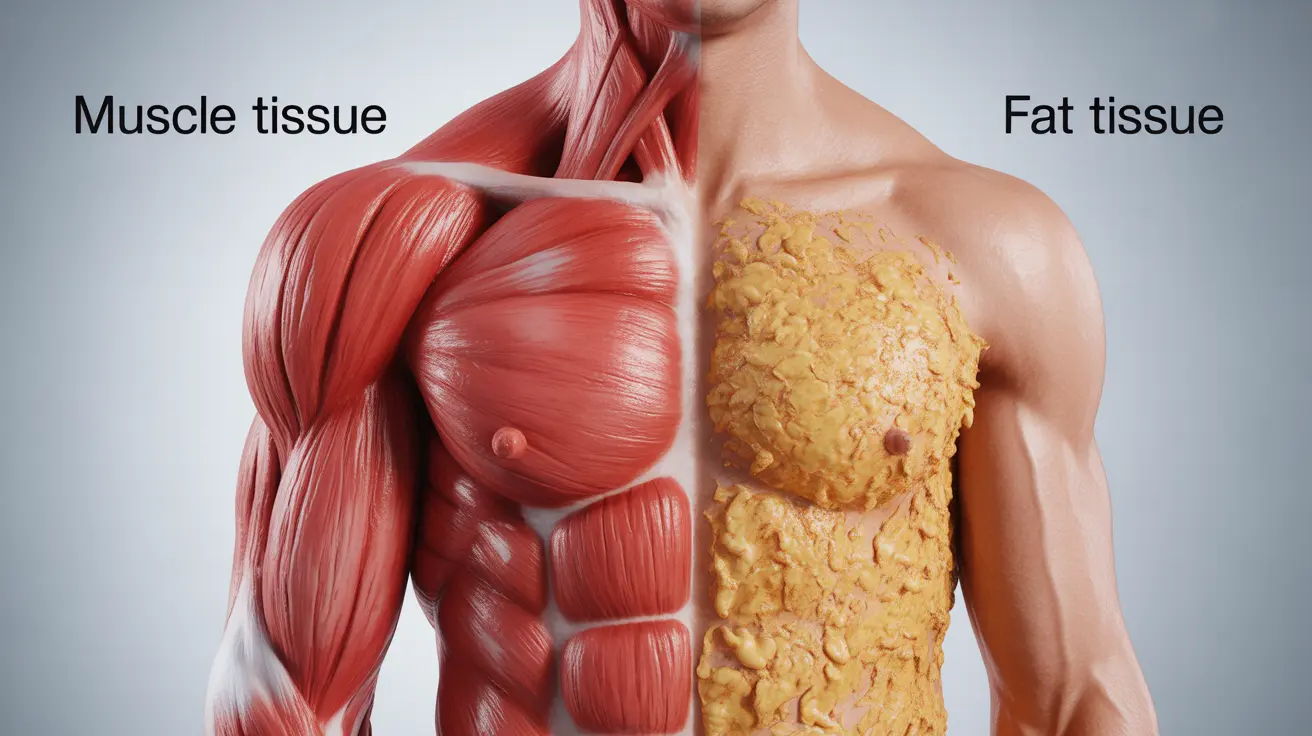Many people wonder if muscle weighs more than fat, especially when trying to understand changes in their body composition during fitness journeys. While this common belief needs some clarification, understanding the relationship between muscle and fat can help you better track your fitness progress and set realistic goals.
Let's explore the science behind muscle and fat weight, their differences in density, and how they affect your overall health and appearance.
The Science of Muscle and Fat Weight
When comparing muscle and fat, it's important to understand that a pound of muscle weighs exactly the same as a pound of fat—one pound. However, the key difference lies in their density and volume. Muscle tissue is roughly 18% more dense than fat tissue, meaning it takes up less space in your body for the same weight.
This density difference explains why two people of the same weight can look drastically different depending on their body composition. Someone with more muscle mass may appear leaner and more toned, even if they weigh the same as someone with a higher percentage of body fat.
The Impact of Muscle vs. Fat on Your Body
Metabolic Benefits of Muscle
Muscle tissue is metabolically active, meaning it burns more calories at rest compared to fat tissue. On average, a pound of muscle burns 6-7 calories per day at rest, while a pound of fat burns only 2-3 calories. This difference might seem small, but it adds up when considering your total muscle mass.
Visual Differences and Body Composition
Due to muscle's higher density, increasing muscle mass while decreasing body fat can lead to:
- A more toned and defined appearance
- Improved body shape and contours
- Better fitting clothes, even at the same weight
- Enhanced physical performance and strength
Understanding Body Measurements and BMI
Body Mass Index (BMI) calculations don't distinguish between muscle and fat weight, which can lead to misleading results for athletic individuals. Someone with significant muscle mass might be classified as "overweight" or even "obese" on the BMI scale, despite having a healthy body fat percentage.
Building Muscle and Reducing Fat
To achieve a leaner physique, consider these evidence-based strategies:
- Regular strength training exercises
- Adequate protein intake (0.8-1 gram per pound of body weight)
- Balanced nutrition with appropriate calorie intake
- Consistent cardiovascular exercise
- Proper rest and recovery between workouts
Frequently Asked Questions
Is muscle really heavier than fat or do they weigh the same?
A pound of muscle weighs exactly the same as a pound of fat. However, muscle is more dense than fat, meaning it takes up less space in your body for the same weight.
Why does muscle take up less space in the body than fat even if they weigh the same?
Muscle tissue is approximately 18% more dense than fat tissue. This higher density means that muscle is more compact and takes up less physical space than an equal weight of fat.
How does having more muscle affect metabolism compared to having more fat?
Muscle tissue is more metabolically active than fat tissue. One pound of muscle burns approximately 6-7 calories per day at rest, while a pound of fat only burns 2-3 calories, contributing to a higher overall metabolic rate.
Can muscle mass cause a high BMI even if body fat is low?
Yes, high muscle mass can result in an elevated BMI because the calculation doesn't differentiate between muscle and fat weight. This is why BMI shouldn't be the only measure of health, especially for athletic individuals.
What are effective ways to build muscle and reduce body fat for a leaner appearance?
To build muscle and reduce body fat, focus on regular strength training, maintaining adequate protein intake, following a balanced nutrition plan, incorporating cardiovascular exercise, and ensuring proper rest and recovery. Consistency in these areas is key to achieving and maintaining results.




